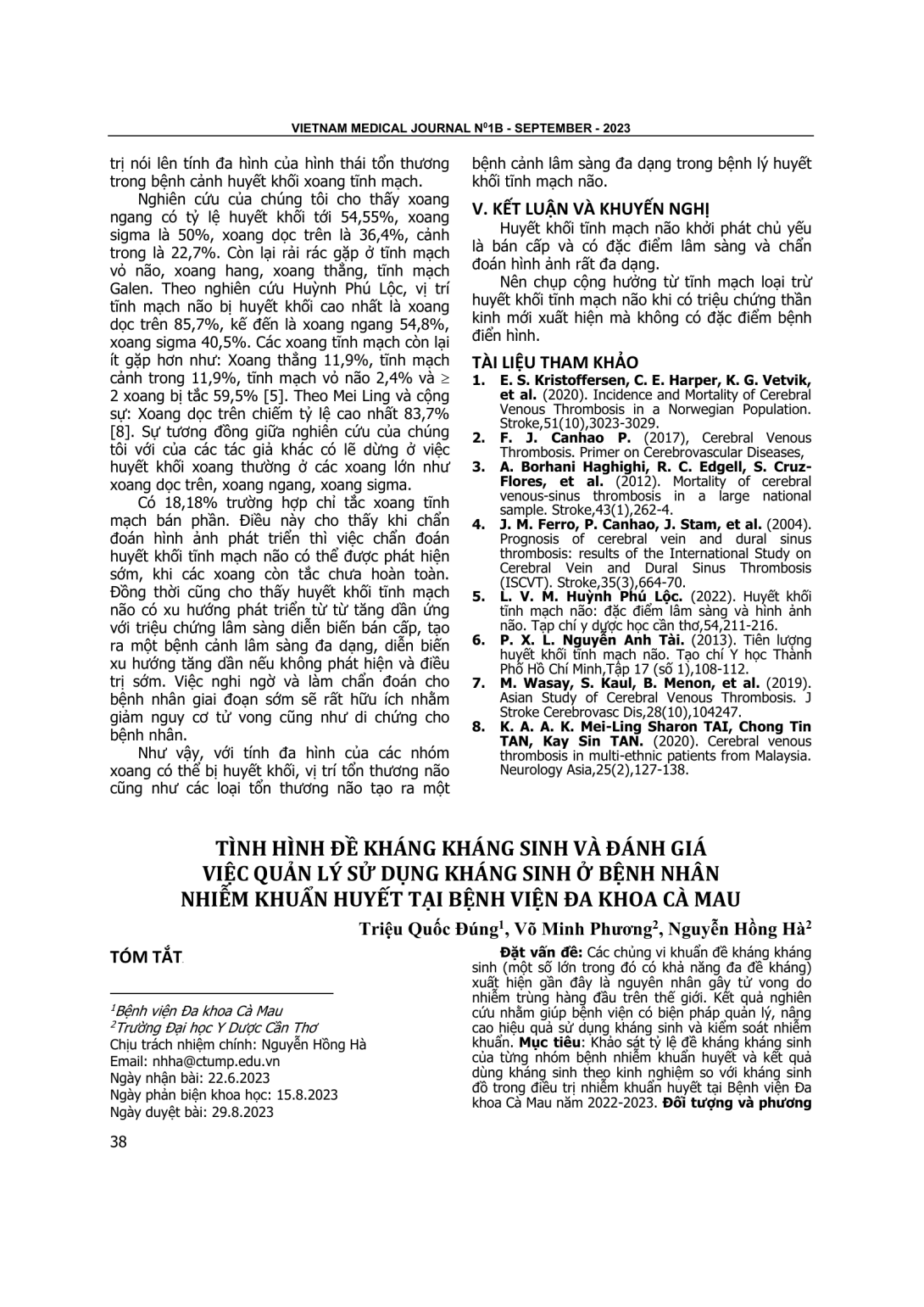
Các chủng vi khuẩn đề kháng kháng sinh (một số lớn trong đó có khả năng đa đề kháng) xuất hiện gần đây là nguyên nhân gây tử vong do nhiễm trùng hàng đầu trên thế giới. Kết quả nghiên cứu nhằm giúp bệnh viện có biện pháp quản lý, nâng cao hiệu quả sử dụng kháng sinh và kiểm soát nhiễm khuẩn. Mục tiêu: Khảo sát tỷ lệ đề kháng kháng sinh của từng nhóm bệnh nhiễm khuẩn huyết và kết quả dùng kháng sinh theo kinh nghiệm so với kháng sinh đồ trong điều trị nhiễm khuẩn huyết tại Bệnh viện Đa khoa Cà Mau năm 2022-2023. Đối tượng và phương pháp nghiên cứu: Mô tả cắt ngang, hồi cứu trên 281 bệnh án nội trú của bệnh nhân được chẩn đoán xác định nhiễm khuẩn huyết tại Bệnh viện Đa khoa Cà Mau. Kết quả: Tỉ lệ vi khuẩn chiếm đa số là Staphylococcus aureus (19,9%), Staphylococcus hominis (17,4%), Burkholdia cepacian (15,7%), Escherichia coli (15,3%) và còn lại là các vi khuẩn khác. Tỉ lệ vi khuẩn nhạy với kháng sinh là 63,0%, đa kháng kháng sinh là 52,7% và kháng mở rộng là 28,1%. Tỉ lệ phù hợp giữa kết quả sử dụng kháng sinh theo kinh nghiệm với kết quả kháng sinh đồ là 67,3%. Kết luận: Tỉ lệ vi khuẩn đa kháng kháng sinh là 52,7% và kháng mở rộng là 28,1%. Tỉ lệ phù hợp giữa kết quả sử dụng kháng sinh theo kinh nghiệm với kết quả kháng sinh đồ là 67,3%.
Antibiotic-resistant bacterial strains (many of which are multi-resistant) have recently emerged as the leading cause of death from infection worldwide. The research results aim to help the hospital manage, improve the effectiveness of antibiotic use and control infection. Objectives: Survey on the antibiotic resistance rate of each group of septicemia patients and the results of empirical antibiotic use compared to antibiotic susceptibility testing in the treatment of septicemia at Ca Mau General Hospital in 2022-2023. Materials and methods: Retrospective, descriptive and cross-sectional methods were used. The sample size of the study was 281 medical records of inpatients diagnosed with sepsis at Ca Mau General Hospital. Results: The majority of bacteria were Staphylococcus aureus (19.9%), Staphylococcus hominis (17.4%), Burkholderia cepacia (15.7%), Escherichia coli (15.3%) and the rest were bacteria other. The rate of antibiotic-sensitive bacteria is 63%, multi-antibiotic resistance is 52.7% and extended resistance is 28.1%. The rate of concordance between the results of antibiotic use according to the experience of the treating doctor with the results of the antibiogram was 67.3%. Conclusions: Detection of pathogenous bacteria and a reasonable antibiotic use is needed in treatment of septicemia.
- Đăng nhập để gửi ý kiến
